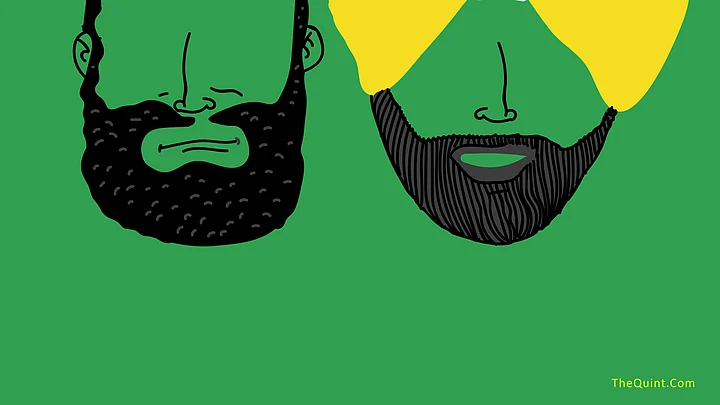Professor Tariq Jatala is a worried man these days. The former principal of Dayal Singh College, Sailkot, meets a large number of people in Lahore and convinces them that when officials from the census department visit their homes, they must not claim Urdu to be their mother tongue.
“If they do, they would betray their maa boli (mother tongue),” Jatala, a Punjabi Prachar activist, argues.
Census in Pakistan
Since the census operation began on last 17 March, lovers of Punjabi have organised seminars and meetings in favour of the vernacular language. They seek nothing but a fair deal for Punjabi.
Punjabi is the mother tongue of Urdu-speaking people of Punjab. Yet, they are likely to write Urdu as their mother tongue rather than Punjabi, though they speak the language. This is the reason that lovers of Punjabi have taken to the streets as a mark of solidarity to save the language of the land.
No Punjabi in Assembly
To top it all, the use of Punjabi is not allowed in Pakistan’s Punjab assembly. Only Urdu and English are allowed in the assembly. During the last census in Pakistan, conducted in 1998, 7.6 crore (44 percent) Pakistanis reported they were Punjabi speaking.
In the 1951 census, 56 percent reported they spoke Punjabi.
Punjabi activists are worried that the next enumeration process might throw up a far lower number as compared to the 1998 findings since many Punjabis have begun shunning their mother tongue.
Flawed Language Policy
While Pakistan was created for Muslims in 1947, it was split in 1971 due to differences stemming from linguistic disparity.
Thus, it is all the more important for Pakistan to wake up before it is too late. And it is certainly not easy to believe that the seeds of division were sown in Dhaka on 21 March 1948, by none other than Muhammad Ali Jinnah himself.
It would be fair to go into the reasons that had shaken the edifice of the two-nation theory. Less than a year after Jinnah managed to carve out a separate nation for Muslims of India, he consciously or unconsciously divided Pakistan.
On 21 March, Jinnah announced at the Dhaka Race Course: ‘Urdu, and only Urdu’ embodied the spirit of a Muslim nation and would remain the state language, labelling those who disagreed with his views as ‘enemies of Pakistan’.
This was unacceptable to East Pakistan (now Bangladesh). Widespread protests began after Jinnah made this announcement. Fighting the imposition of Urdu became a part of life in East Pakistan.
The Dhaka University campus was the bastion of pro-Bangla protesters. On 21 February 1952, without any provocation, Pakistani rangers fired at students demanding a fair deal for their native language, leading to scores of deaths.
Jinnah’s whimsical views on the issue of Urdu created a deep sense of alienation among the non-Urdu speaking people of Pakistan.
Scared Language Status
Punjabi is in danger as some people identify Urdu as a ‘sacred language’.
Those who think of Punjabi as a threat to their faith because it is used by Sikhs, Hindus, and Christians, conveniently forget that Arabic is a shared language among Muslims, Christians, and Jews in West Asia and North Africa. If the Arabic of Christians and Jews does not pollute the faith of the Arabic-speaking Muslims, how will the Punjabi of Sikhs, Hindus, and Christians contaminate the faith of Punjabi-speaking Muslims who happen to be the majority?Mushtaq Soofi, Writer
Soofi believes that a large number of Punjabis have been ‘indoctrinated and brainwashed’.
Punjabi and Maharaja Ranjit Singh
Language is a very emotive issue and must be handled with utmost care and sensitivity. Even in India, we have seen acrimony due to language in Punjab, where Punjabi suffered in its own backyard. Punjabi did not receive its due status even under Maharaja Ranjit Singh’s regime. Persian was the court language in Punjab at that time.
Subsequently, Urdu became the official language of Punjab in Pakistan, even when Punjabi was spoken by one and all.
As for India, Punjabi got its legitimate status once states were carved out on linguistic basis, following several bitter events.
The creation of Bangladesh and the neglect of Punjabi in Punjab should be an eye-opener for Indians. Imposition of one language could prove counter-productive. It is precisely for this reason that all native languages must be given a fair deal.
(The writer is former Editor, Somaiya Publications. The views expressed above are the author’s own. The Quint neither endorses nor is responsible for the same.)
(At The Quint, we question everything. Play an active role in shaping our journalism by becoming a member today.)
